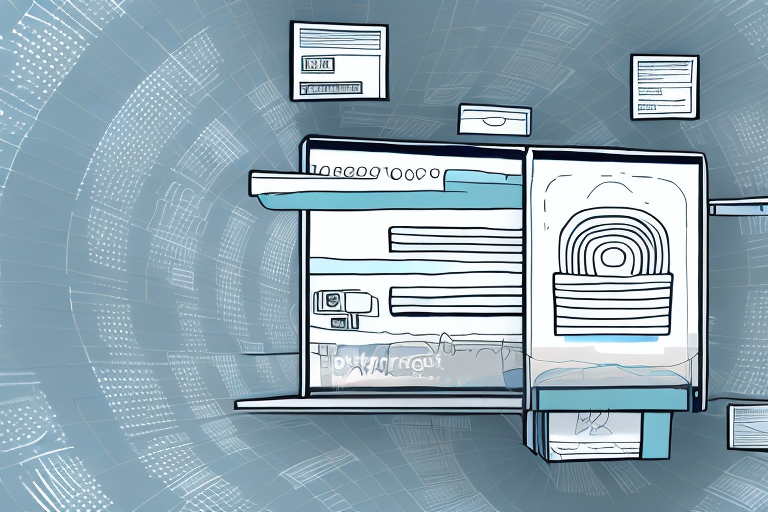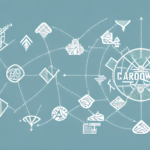In the world of shipping, there are many terms and phrases that may be unfamiliar to those who are not part of the industry. One such term is 'arrival scan'. While it may sound like a simple term, its significance cannot be underestimated, especially in the age of e-commerce and international trade. In this article, we will delve into the meaning of arrival scans, their importance in the shipping industry, and how they can help you track your packages.
The Importance of Arrival Scans in the Shipping Industry
Arrival scans are a key component of package tracking, providing critical information about the status and location of shipments. In simple terms, an arrival scan refers to the process of scanning a package as it arrives at a specific location, such as a shipping hub or sorting facility. This scan helps to record the date and time of arrival, which is then transmitted to the shipper and receiver of the package.
Beyond just providing information about the arrival of a package, these scans are also important for ensuring package security and safety. By scanning packages at every stage of their journey, shipping companies can detect any abnormalities or irregularities, such as damage or tampering, and take appropriate action to address them.
In addition, arrival scans also play a crucial role in improving the efficiency of the shipping process. By tracking the location of packages in real-time, shipping companies can optimize their routes and delivery schedules, reducing the time and cost associated with shipping. This not only benefits the shipping companies themselves but also their customers, who can enjoy faster and more reliable delivery times.
How Arrival Scans Can Help You Track Your Packages
For those who frequently send or receive packages, arrival scans are an essential tool for tracking their shipments. In many cases, arrival scans are accompanied by other tracking updates, such as departure scans, transit updates, and delivery confirmations.
By utilizing this tracking information, shippers and receivers can stay informed about the status of their packages, and make necessary arrangements to ensure that they arrive at their intended destination on time. Whether it's scheduling a delivery window or redirecting a package to a more convenient location, the information provided by arrival scans can help ensure a smooth and efficient shipping process.
It's important to note that arrival scans are not always 100% accurate, and there may be delays or errors in the tracking information provided. However, by keeping an eye on the tracking updates and contacting the shipping company if there are any concerns, shippers and receivers can work together to resolve any issues and ensure that their packages arrive safely and on time.
Commonly Used Technologies for Arrival Scans
There are several technologies used to facilitate arrival scans, including barcode scanners, radio frequency identification (RFID) tags, and GPS tracking. Barcode scanners are the most common method, and involve scanning a barcode on the package to record its arrival at a specific location.
RFID tags, on the other hand, use radio waves to transmit information about the package, such as its location and status. These tags are becoming increasingly popular for their ability to provide real-time tracking updates, and for their ability to track packages in areas where barcode scanners may not be practical.
Another technology that is gaining popularity for arrival scans is computer vision. This involves using cameras and artificial intelligence to recognize and track packages as they move through a facility. This technology can be more efficient than barcode scanning, as it does not require a physical label on the package, and can also provide additional information such as package dimensions and weight.
In addition to these technologies, some companies are experimenting with drones for delivery and arrival scans. Drones equipped with cameras and GPS can quickly and efficiently scan packages as they are delivered, providing real-time updates on package location and status. However, there are still regulatory and safety concerns that need to be addressed before drone delivery and scanning can become widespread.
The Role of Arrival Scans in Ensuring Package Security and Safety
As previously mentioned, arrival scans play a crucial role in ensuring the security and safety of packages in transit. By scanning packages at every stage of their journey, shipping companies can detect any irregularities or anomalies, and take appropriate action to address them.
For example, if a package is scanned upon arrival at a sorting facility and shows signs of damage, shipping companies can investigate the cause and take steps to prevent further damage or loss. Similarly, if a package is detected as being tampered with, shippers can take steps to investigate the situation and ensure that the package is delivered securely and safely.
In addition to detecting damage and tampering, arrival scans also help shipping companies track the location of packages in real-time. This allows them to provide accurate delivery estimates to customers and quickly identify any delays or issues that may arise during transit. Arrival scans also provide a record of when and where a package was scanned, which can be useful in resolving any disputes or issues that may arise during the shipping process.
How to Interpret an Arrival Scan: A Step-by-Step Guide
Interpreting an arrival scan can be an easy process, especially if you are familiar with the tracking system used by the shipping company. Generally, an arrival scan will include the date and time of arrival, the location of the scan, and other relevant details, such as the weight and dimensions of the package.
To interpret an arrival scan, simply refer to the tracking information provided by the shipping company. This information may be available through an online portal or app, or it may be sent directly to you via email or text message.
The Difference Between Arrival Scans and Delivery Confirmations
While arrival scans and delivery confirmations may sound similar, they actually refer to different stages of the shipping process. An arrival scan is typically performed when a package arrives at a specific location, such as a sorting facility or delivery hub. A delivery confirmation, on the other hand, is typically performed when a package is delivered to its intended recipient.
While both arrival scans and delivery confirmations are important for tracking packages, they provide different types of information. Arrival scans are primarily focused on tracking the movement of a package from one location to another, while delivery confirmations provide information about when and where a package was delivered.
Understanding the Limitations of Arrival Scans in Package Tracking
While arrival scans are an invaluable tool for tracking packages, they do have certain limitations. For example, arrival scans may not provide real-time tracking information in all cases, particularly in areas where GPS or other tracking technologies are not available.
Additionally, arrival scans may not always be accurate, particularly if there are issues with scanning equipment or barcode labels. In some cases, packages may be scanned as having arrived at a location, even if they have not yet been received or processed.
How to Troubleshoot Arrival Scan Errors
If you encounter errors or issues with arrival scans, there are several steps you can take to troubleshoot the problem. For example, you may want to first check the tracking information provided by the shipping company to see if there are any updates or additional information available.
If you are still experiencing issues, contacting the shipping company directly can be helpful. They may be able to provide additional information or take steps to resolve the issue, such as performing an additional scan or investigating the package's location.
The Future of Arrival Scans: Predictive Analytics and Machine Learning
As technology continues to evolve, so too do the applications of arrival scans. In recent years, predictive analytics and machine learning have emerged as tools for improving the accuracy and efficiency of package tracking.
By utilizing large amounts of data, including arrival scan information, shipping companies can identify patterns and trends in package delivery, and use this information to optimize their operations. For example, they may be able to predict and proactively address potential delays or disruptions in the shipping process, leading to more reliable and efficient delivery times.
International Shipping and Arrival Scans: What You Should Know
For those involved in international shipping, arrival scans can be particularly important. International packages may pass through multiple countries and customs checkpoints, making it crucial to track their movements and ensure timely delivery.
When shipping internationally, it's important to work with a shipping company that has experience and expertise in navigating the complexities of international shipping. This may include understanding local customs regulations, utilizing appropriate tracking technologies, and providing support for international customers.
Best Practices for Utilizing Arrival Scan Data to Improve Supply Chain Management
For businesses that rely on shipping and logistics as part of their operations, arrival scan data can be a valuable tool for improving supply chain management. By utilizing this data, businesses can gain insights into their shipping and delivery processes, and make necessary changes to improve efficiency and reduce costs.
Some best practices for utilizing arrival scan data may include analyzing trends in delivery times or transportation costs, identifying potential bottlenecks in the shipping process, and optimizing delivery routes to minimize transit times.
The Impact of COVID-19 on Shipping and Arrival Scans
The COVID-19 pandemic has had a significant impact on the shipping industry, leading to delays and disruptions in the delivery of packages. As a result, arrival scans have become even more important for tracking packages and ensuring timely delivery.
Shipping companies have had to adapt to new challenges brought on by the pandemic, such as increased demand for e-commerce deliveries and changes in transportation routes. By utilizing arrival scans and other tracking tools, they can help to mitigate some of these challenges and ensure that packages are delivered as efficiently as possible.
Alternatives to Arrival Scans for Package Tracking
While arrival scans are a widely-used method for tracking packages, they are not the only option available. Other methods of package tracking may include using GPS tracking devices, RFID tags, or even drone-based delivery systems.
When selecting a package tracking method, it's important to consider factors such as cost, reliability, and ease of use. Arrival scans may be the most common method, but other options may be more practical or efficient depending on the specifics of your shipping needs.
How to Optimize Your Shipping Strategy Using Data from Arrival Scans
By utilizing data from arrival scans and other tracking tools, businesses can optimize their shipping strategy and improve overall efficiency. Some strategies for optimizing your shipping operations may include focusing on specific delivery routes or transportation methods, working with shipping partners who offer competitive pricing or faster delivery times, and implementing new technologies or software to improve tracking and analytics.
Conclusion
Arrival scans are a critical component of the shipping and logistics industry, providing important information about package status and location. Whether you are shipping internationally or domestically, understanding the significance of arrival scans can help you stay informed about the status of your shipments, and ensure that they arrive at their intended destination on time and in good condition.



















